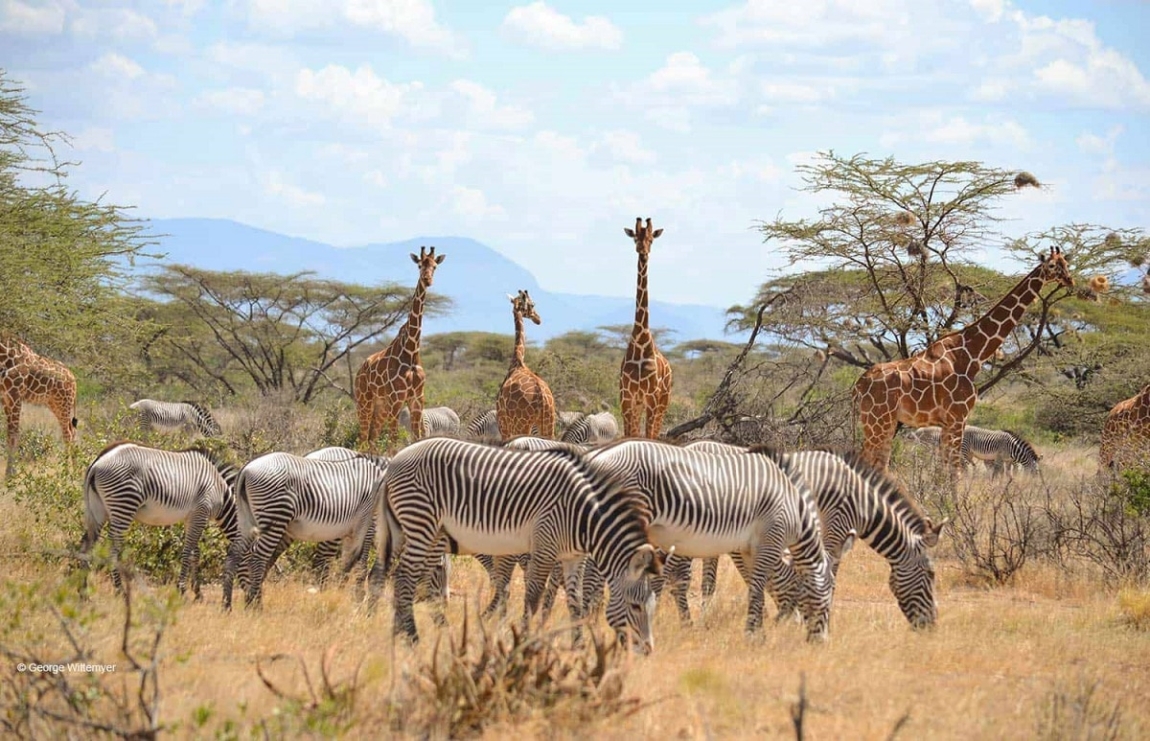Samburu National Reserve is a game reserve located on the banks of the Ewaso Ng’iro river in Kenya. It covers an area of 165 km² and is situated approximately 350 km (220 mi) from Nairobi. The reserve ranges in elevation from 800 to 1,230 meters and is part of Samburu County. Here are some interesting facts about Samburu National Reserve:
Wildlife: The reserve is home to a wide variety of animal and bird life. You can find several large game species common to Kenya’s northern plains, including gerenuk, Grevy’s zebra, oryx, and reticulated giraffe. All three big cats—lion, cheetah, and African leopard—as well as elephant, Cape buffalo, and hippopotamus are also present. Olive baboons, warthogs, Grant’s gazelle, Kirk’s dik-dik, impala, and waterbuck are frequently seen. Additionally, a black rhinoceros population has been reintroduced into the park after an absence of 25 years due to heavy poaching. The reserve boasts over 350 species of birds, including the grey-headed kingfisher, sunbirds, bee-eaters, Marabou stork, tawny eagle, Verreaux’s eagle, bateleur, vulturine guineafowl, lilac-breasted roller, secretary bird, superb starling, northern red-billed hornbill, yellow-billed hornbill, and various vultures, including the palm-nut vulture. The Ewaso Ng’iro river contains large numbers of Nile crocodile basks.
Mountains and Vegetation: Samburu National Reserve contains two mountains, Koitogor and Ololokwe. The Ewaso Ng’iro river runs through the reserve, surrounded by a mixture of acacia, riverine forest, thorn trees, and grassland vegetation. The natural serenity of the reserve is due to its distance from industry and its historical inaccessibility.
Conservation and History: Samburu National Reserve was one of the two areas where conservationists George and Joy Adamson raised Elsa the Lioness, made famous in the best-selling book and award-winning movie Born Free. The Elephant Watch Camp, directed by Saba Douglas-Hamilton, lies within the park. The reserve is also home to Kamunyak, a lioness famous for adopting oryx calves. If you ever get a chance to visit, you’ll be immersed in the rugged beauty of this unique wildlife conservation haven! 🦓🦒🦁

